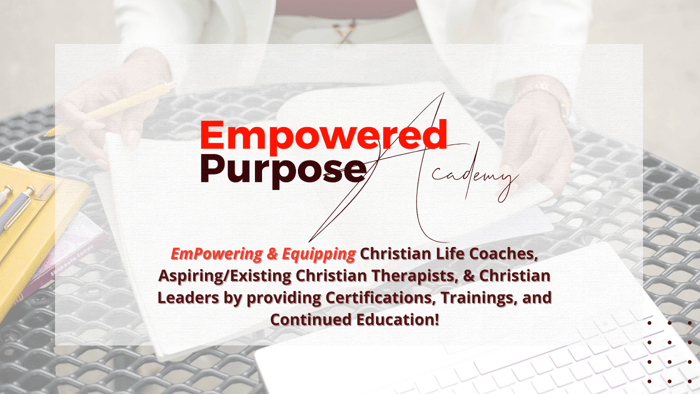Table of Contents
The Relationship Between Attachment Styles and Poor Boundaries
The Relationship Between Attachment Styles and Poor Boundaries
 Attachment styles and personal boundaries are crucial in shaping relationships and emotional well-being. Attachment theory, developed by John Bowlby and expanded by Mary Ainsworth, explains how early interactions with caregivers shape relationship patterns throughout life. On the other hand, boundaries define emotional, physical, and psychological limits in relationships to protect well-being.
Attachment styles and personal boundaries are crucial in shaping relationships and emotional well-being. Attachment theory, developed by John Bowlby and expanded by Mary Ainsworth, explains how early interactions with caregivers shape relationship patterns throughout life. On the other hand, boundaries define emotional, physical, and psychological limits in relationships to protect well-being.
Although they may seem unrelated, attachment styles and boundary-setting are deeply connected. How people form attachments in childhood influences how they set and maintain boundaries as adults. Understanding this connection can help individuals develop healthier relationships, improve emotional well-being, and foster personal growth.
Understanding Attachment Styles
Attachment theory describes four primary attachment styles, each developed based on early caregiving experiences. These styles impact how people connect with others, manage intimacy, and handle emotional needs.
Secure Attachment
People with a secure attachment style tend to have healthy, trusting relationships. They are comfortable with emotional closeness and independence and can set and respect boundaries without fear of rejection.Anxious-Preoccupied Attachment
Those with an anxious-preoccupied attachment style often seek constant reassurance in relationships. They may fear abandonment and struggle with emotional dependence, leading to difficulty setting healthy boundaries.Dismissive-Avoidant Attachment
Individuals with a dismissive-avoidant attachment style prioritize independence over emotional intimacy. They may struggle with vulnerability and prefer rigid boundaries that keep others at a distance.Fearful-Avoidant (Disorganized) Attachment
People with a fearful-avoidant attachment style have conflicting desires for closeness and independence. They may experience difficulty trusting others and often alternate between enmeshed and rigid boundaries, creating instability in relationships.
What Are Boundaries and Why Are They Important?
Boundaries are the limits people set to protect their emotional and physical well-being. Healthy boundaries help individuals maintain self-respect, communicate needs effectively, and prevent emotional exhaustion. They play an essential role in developing fulfilling relationships by ensuring mutual respect and personal space.
When people struggle with boundaries, they may experience difficulty in relationships, emotional distress, or unhealthy interpersonal dynamics. Those with insecure attachment styles often face challenges in establishing or maintaining appropriate boundaries, which can lead to frustration, conflict, and dissatisfaction.
The Connection Between Attachment Styles and Poor Boundaries
- Anxious-Preoccupied Attachment and Weak Boundaries
People with an anxious attachment style may have trouble setting and enforcing boundaries. Their fear of rejection often leads them to put others’ needs ahead of their own, resulting in relationships where personal limits are unclear or constantly compromised.
Example: A person with an anxious attachment style might feel guilty for saying no, even when overwhelmed, fearing that others will be upset or abandon them.
- Dismissive-Avoidant Attachment and Rigid Boundaries
Those with a dismissive-avoidant attachment style may use rigid boundaries to maintain independence and avoid emotional vulnerability. They may struggle to open up and form deep connections, keeping people at a distance to avoid potential emotional pain.
Example: Someone with a dismissive-avoidant attachment style may refuse to share personal struggles, believing that relying on others is a sign of weakness.
- Fearful-Avoidant Attachment and Inconsistent Boundaries
People with a fearful-avoidant attachment style often struggle with setting consistent boundaries. They may desire emotional closeness but fear being hurt, leading to unpredictable boundary-setting behaviors that confuse and frustrate others.
Example: A fearful-avoidant person may initially seek emotional support but later push people away out of fear of betrayal or rejection.
How to Develop Healthier Boundaries
Understanding the relationship between attachment styles and boundary-setting can help individuals create healthier relationships and emotional balance.
Self-Reflection and Awareness
Recognizing personal attachment patterns and their influence on boundary-setting is crucial for improvement. Reflecting on past relationships and identifying recurring struggles can help make necessary changes.Improve Communication Skills
Straightforward and assertive communication is essential for setting and maintaining boundaries. Using statements such as "I need time for myself to recharge" instead of "You never give me space" can help establish boundaries without blaming others.Set and Maintain Personal Limits
People with an anxious attachment style may need to practice saying no without guilt, while those with avoidant tendencies can work on allowing more emotional closeness. Consistency in boundary-setting is key to maintaining healthy relationships.Seek Professional Support
Therapy or coaching can be beneficial for individuals struggling with attachment-related boundary issues. A mental health professional can provide tools and strategies for setting healthier boundaries and navigating attachment challenges.Engage in Self-Care and Personal Growth
Practicing mindfulness, journaling, and self-care activities can help reinforce healthy boundaries. Developing a strong sense of self-worth makes it easier to maintain personal limits without fear of rejection.
Final Thoughts
The connection between attachment styles and boundary-setting plays a significant role in emotional well-being and relationship satisfaction. Understanding how early attachment experiences influence the ability to set limits can help individuals work toward creating more fulfilling, balanced relationships.
Recognizing patterns, improving communication, and seeking support can help break unhealthy cycles and develop healthier interactions. Whether someone struggles with emotional dependence, avoidance, or inconsistent boundaries, taking steps toward self-awareness and growth can lead to more tremendous relationship success and personal fulfillment.
For those looking to deepen their understanding of attachment and boundaries, EmPowered Purpose Academy offers resources, workshops, and training for emotional healing and relationship development. Developing healthier boundaries and attachment patterns can lead to a more empowered, fulfilling life.
In addition, check out our book, How to Set Healthy Boundaries: God's Way!
About the Book
How to Set Boundaries God’s Way is a faith-centered guide written by a Licensed Therapist with extensive professional experience who has helped many clients overcome struggles with boundary-setting. Drawing from both personal and professional journeys, this book equips you with the tools and wisdom to establish boundaries that honor your God-given worth.
Rooted in biblical principles and practical strategies, this guide will help you:
- Overcome emotional, mental, and spiritual obstacles to assertiveness.
- Set clear and healthy boundaries in all areas of life—work, family, friendships, and ministry.
- Communicate your needs with confidence and compassion.
- Maintain boundaries even in challenging situations or when facing setbacks.
- Rely on the Holy Spirit for guidance and strength as you navigate difficult conversations.
With personalized journaling prompts, prayers, affirmations, and links to exclusive audio and video resources, How to Set Boundaries God’s Way offers more than just theory—it’s a step-by-step, actionable resource based on years of therapeutic expertise and personal growth.
FAQs
1. How do attachment styles influence personal boundaries?
Attachment styles shape how people connect with others and manage emotional intimacy, directly impacting boundary-setting. For example, those with anxious-preoccupied attachment may struggle to enforce boundaries due to fear of rejection, while dismissive-avoidant individuals may set rigid boundaries to maintain independence. Understanding your attachment style helps you set healthier, more balanced boundaries in relationships.
2. Why do people with an anxious attachment style struggle with boundaries?
Individuals with an anxious-preoccupied attachment style often fear abandonment and seek constant reassurance in relationships. This can lead to weak or inconsistent boundaries because they may prioritize others’ needs over their own to avoid rejection. They may struggle to say “no” and feel guilty when asserting their limits.
3. How can someone with a dismissive-avoidant attachment style develop healthier boundaries?
People with a dismissive-avoidant attachment tend to set rigid boundaries to avoid emotional closeness. To develop healthier boundaries, they can practice gradual emotional openness, challenge negative beliefs about vulnerability, and work on communicating their needs without shutting others out.
4. What are signs of poor boundaries in relationships?
Signs of poor boundaries include:
• Feeling guilty for saying no
• Overcommitting to please others
• Avoiding emotional intimacy out of fear
• Inconsistent boundary enforcement (setting limits but not maintaining them)
• Feeling emotionally drained from others’ demands
Recognizing these patterns is the first step toward setting healthier boundaries.
5. How can I start setting boundaries if I struggle with attachment issues?
Start with self-awareness by identifying your attachment patterns and how they impact your boundaries. Use clear communication to express your needs, practice saying “no” without guilt, and seek support from a therapist or faith-based resources like How to Set Healthy Boundaries: God’s Way. Journaling, prayer, and self-care can also help reinforce your boundaries over time.





